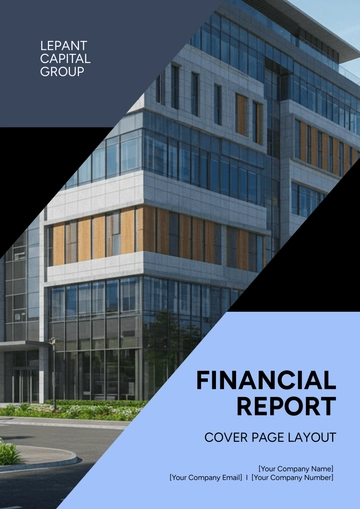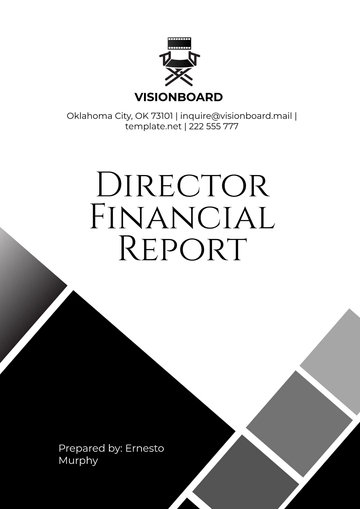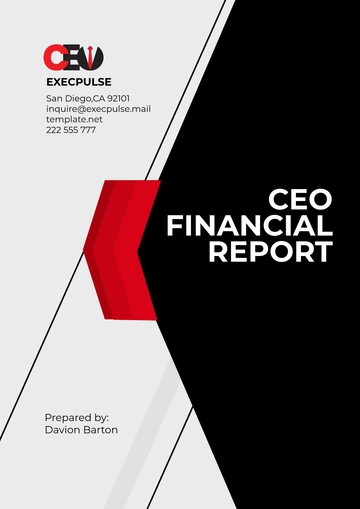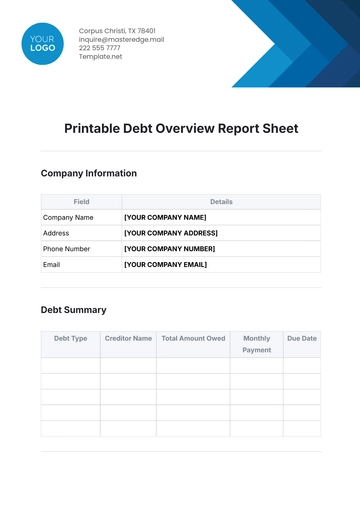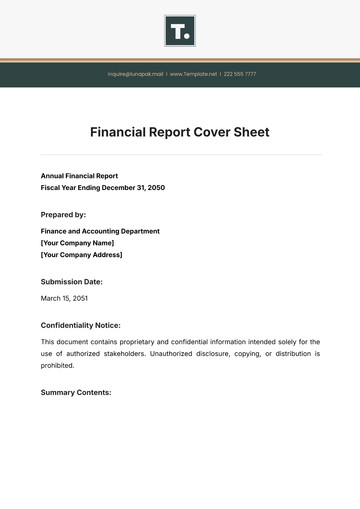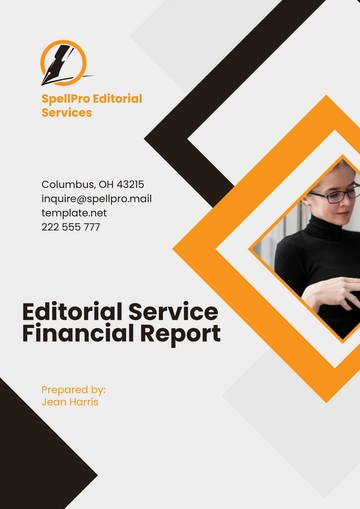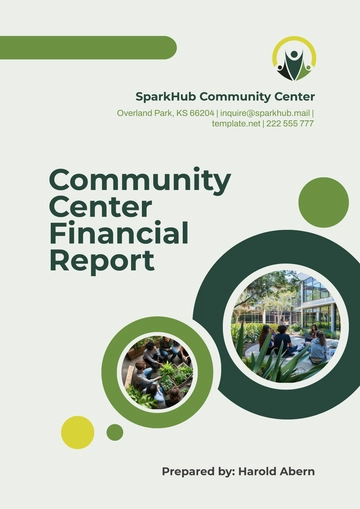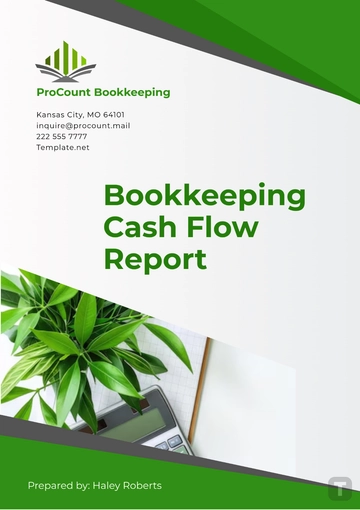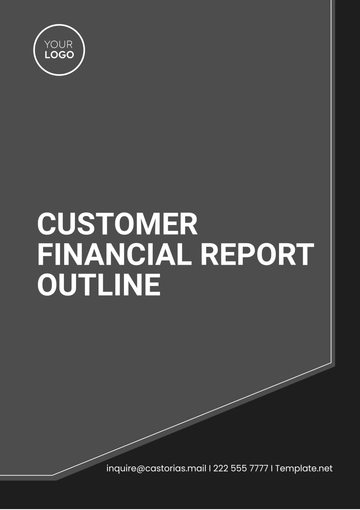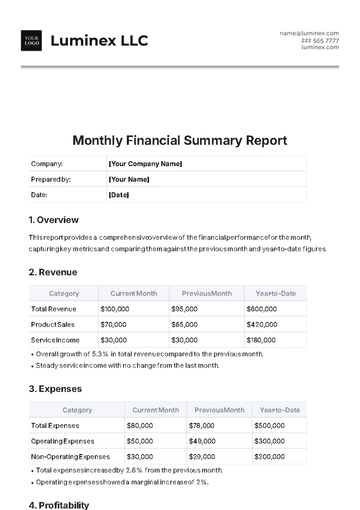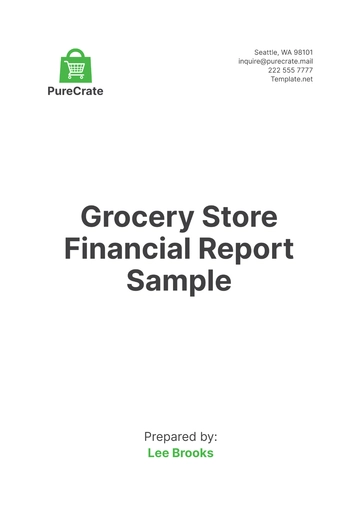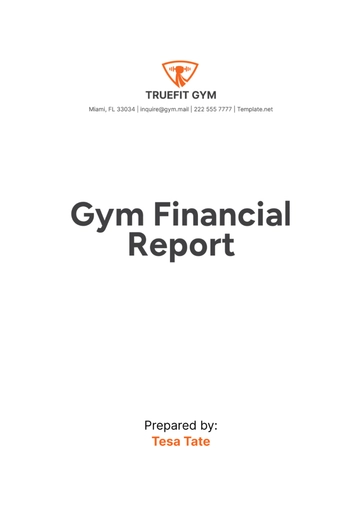Free Gym Financial Report
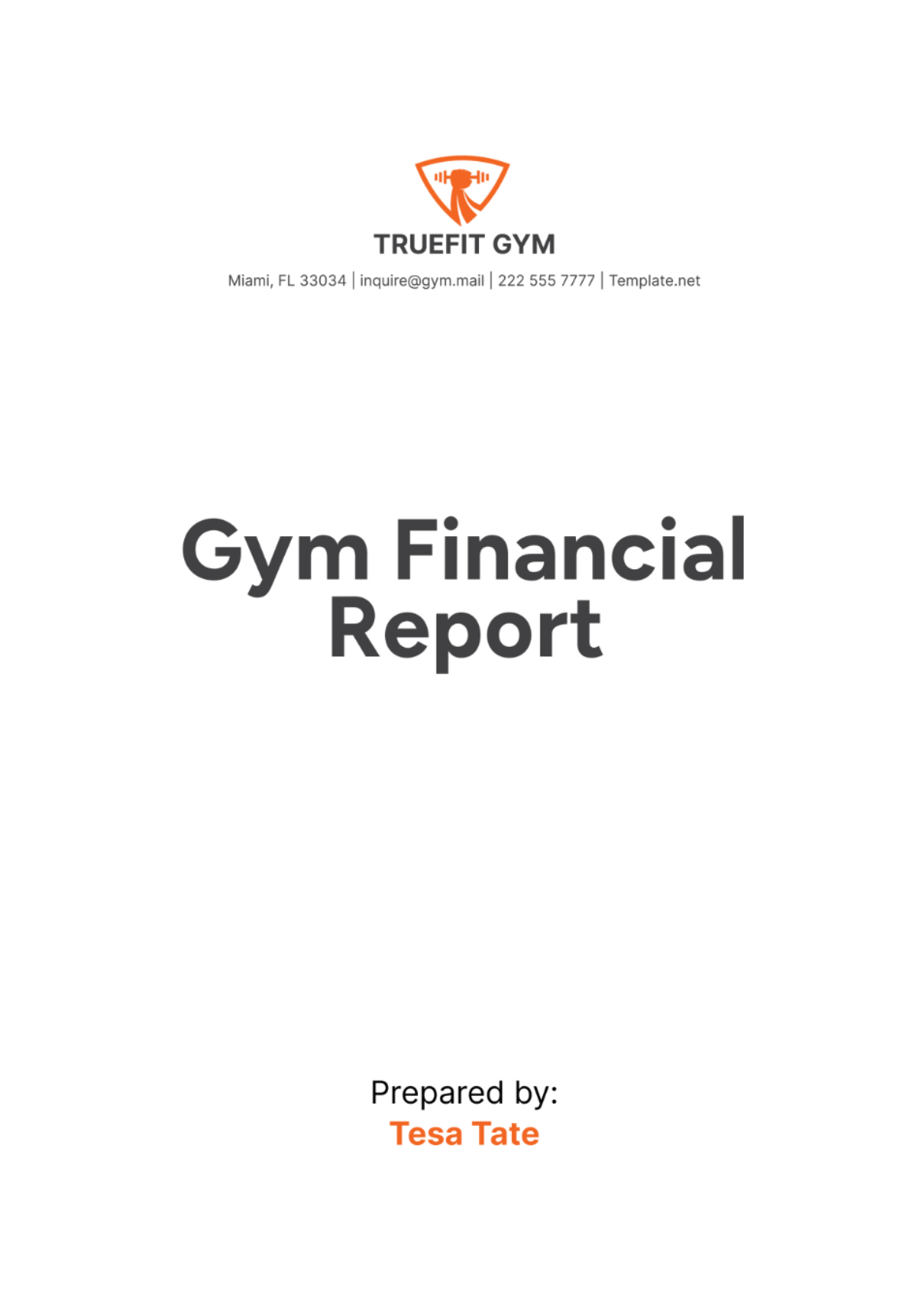
I. Executive Summary
A. Overview of the Gym
[Your Company Name], established in [Year], is a premier fitness facility located in downtown metropolitan area. With a comprehensive range of services including personalized training, group fitness classes, and wellness programs, we cater to a diverse membership base seeking holistic health solutions. Our facility spans 15,000 square feet and features state-of-the-art equipment and amenities designed to enhance the fitness journey of our members.
B. Summary of Financial Performance Highlights
In the fiscal year ending [Date], [Your Company Name] achieved notable financial milestones:
Total revenue increased by [00]% year-over-year, reaching $[0.0] million, driven by growth in membership fees and personal training revenue.
Net profit margin improved to [00]%, up from [00]% in the previous year, reflecting effective cost management strategies and increased operational efficiency.
Our membership retention rate remained strong at [00]%, underscoring our commitment to delivering exceptional member experiences and maintaining high satisfaction levels.
C. Key Financial Metrics and Ratios
The following key financial metrics highlight [Your Company Name]'s financial health:
Metric | Value |
|---|---|
Current Ratio | [00] |
Quick Ratio | |
Gross Profit Margin | |
Net Profit Margin |
The set of metrics that have been analyzed and observed demonstrate that [Your Company Name] possesses a robust level of liquidity, ensuring that it can comfortably meet its short-term financial obligations without encountering cash flow issues. Additionally, these metrics reflect the presence of highly efficient operations, indicating that the company's processes, resource management, and overall operational performance are optimized to maintain minimal waste and maximize productivity.
Furthermore, the metrics reveal that [Your Company Name] is achieving healthy levels of profitability, suggesting that the company is successfully generating sustainable profits from its business activities. Together, these financial and operational indicators position [Your Company Name] advantageously within the competitive landscape of the fitness industry, suggesting that the company is well-equipped to thrive in a market that is continually evolving and filled with competitive pressures.
II. Introduction
A. Purpose and Scope of the Report
This comprehensive Financial Report is meticulously designed to furnish stakeholders with an in-depth analysis of [Your Company Name]'s financial performance throughout the fiscal year [Year]. The report encompasses crucial financial statements, such as the Balance Sheet, Income Statement, and Cash Flow Statement, each providing essential insights into various aspects of the company's financial health. By covering these key areas, the report aims to elucidate revenue trends, offering a thorough examination of how the company has managed its income generation over time. Additionally, it delves into expense management to provide a clear understanding of the company's efforts to control and optimize its expenditures.
The report also highlights strategic financial decisions made during the fiscal year, giving stakeholders a comprehensive perspective on the company's financial strategies and their impacts. Through this detailed analysis, the stakeholders are equipped with the necessary information to make informed decisions, assess the company's financial stability, and understand its positioning within the market.
B. Background of the Gym
Established with the primary purpose of enhancing health and wellness by providing fitness solutions that are easily accessible to everyone, [Your Company Name] has evolved over the years into a reputable and dependable brand that is often associated with excellence and high levels of customer satisfaction. Our comprehensive facility features state-of-the-art technology designed to meet a wide array of fitness needs, and it is staffed by a team of certified fitness professionals who are committed to assisting our members in reaching their individual fitness objectives. Through our unwavering dedication to quality service and support, we strive to create an environment where members can thrive and achieve their personal health and wellness goals.
III. Financial Statements
A. Balance Sheet as of [Date]
Current Assets | Amount ($) |
|---|---|
Cash | [00] |
Accounts Receivable | |
Inventory | |
Total Current Assets | |
Property, Plant & Equipment | |
Accumulated Depreciation | |
Total Assets |
Current Liabilities | Amount ($) |
|---|---|
Accounts Payable | [00] |
Short-term Loans | |
Total Current Liabilities | |
Long-term Loans | |
Owner's Equity | |
Total Liabilities and Equity |
The balance sheet of [Your Company Name] demonstrates effective asset management and an adequate level of liquidity, which ensures that the company is well-positioned to meet its short-term financial obligations. This capability is further supported by a stable foundation of long-term capital, which underpins the company's financial stability and sustainability.
B. Income Statement for the Period Ended [Date]
Revenue | Amount ($) |
|---|---|
Membership Fees | [00] |
Personal Training Revenue | |
Retail Sales | |
Total Revenue |
Expenses | Amount ($) |
|---|---|
Payroll Expenses | [00] |
Rent and Utilities | |
Marketing and Advertising | |
Equipment Maintenance | |
Other Expenses | |
Total Expenses |
Net Income: [00]
[Your Company Name]'s Income Statement for the fiscal year provides a detailed overview, illustrating the company's robust revenue growth and meticulous expense management. This careful balance between increasing income and controlling costs has culminated in a substantial net profit margin, indicating the financial health and operational efficiency of the business throughout the period.
C. Cash Flow Statement for the Period Ended [Date]
Cash Flows from Operating Activities | Amount ($) |
|---|---|
Net Income | [00] |
Depreciation | |
Changes in Working Capital | |
Net Cash from Operating Activities |
Cash Flows from Investing Activities | Amount ($) |
|---|---|
Purchase of Equipment | [00] |
Net Cash Used in Investing Activities |
Cash Flows from Financing Activities | Amount ($) |
|---|---|
Repayment of Long-term Loans | [00] |
Net Cash Used in Financing Activities |
Net Increase in Cash: [00]
Beginning Cash Balance: [00]
Ending Cash Balance: [00]
The Cash Flow Statement provides a detailed illustration of [Your Company Name]'s robust ability to generate cash through its operational activities. Additionally, it highlights the company's prudent approach to capital allocation. This combination of strong cash flow from its core business operations and wise management of financial resources effectively supports and ensures the viability of future growth initiatives for [Your Company Name].
IV. Financial Performance Analysis
A. Revenue Analysis
Trends in Membership Revenue
[Your Company Name] witnessed a consistent rise in membership revenue, demonstrating an impressive year-over-year increase of [00]%. This significant growth can be attributed to the implementation of carefully designed marketing campaigns aimed at specific target audiences, the development and execution of improved member retention strategies, and a relentless commitment to ensuring the highest levels of customer satisfaction.
Personal Training Revenue Growth
The revenue generated from personal training services exhibited a significant and robust growth of [00]%, a trend that can be largely attributed to the introduction of innovative and diverse new training programs coupled with the exceptional expertise of our highly qualified and certified trainers. This particular segment of our business continues to play a crucial and indispensable role in driving the overall revenue for the gym, reaffirming its importance and contribution to our financial success.
B. Expense Analysis
Cost Control Measures
The gym implemented stringent cost control measures, resulting in a [00]% reduction in overall operating expenses compared to budgeted projections. This was achieved through renegotiated vendor contracts, energy-efficient upgrades, and optimized staffing levels.
Comparison with Budgeted Expenses
Actual expenses were closely monitored throughout the year, with notable savings achieved in utilities and marketing expenditures. This disciplined approach helped mitigate cost overruns and improve overall profitability.
C. Profitability Analysis
Gross Profit Margin
[Your Company Name] maintained a healthy gross profit margin of [00]%, reflecting efficient pricing strategies and controlled cost of goods sold. This margin stability underscores the gym's ability to manage operational costs while delivering quality services.
Net Profit Margin
The net profit margin improved to [00]% from [00]% in the previous year, driven by revenue growth and disciplined expense management. This improvement indicates effective financial stewardship and sustainable business practices.
D. Liquidity and Financial Health
Current Ratio
With a current ratio of 2.5, [Your Company Name] demonstrates strong liquidity and the ability to meet short-term financial obligations. This ratio has remained stable, supported by healthy cash flow management and adequate working capital.
Quick Ratio
The quick ratio of 2.0 reaffirms the gym's robust financial health, indicating a strong ability to cover immediate liabilities with liquid assets. This liquidity position provides flexibility for future growth investments and operational needs.
V. Budget vs. Actual Comparison
A. Comparison of Actual Performance vs. Budget
Revenue Variances
Actual revenue exceeded budgeted expectations by [00]%, primarily driven by higher-than-forecasted membership sign-ups and increased personal training sessions. This performance highlights effective revenue generation strategies and strong market demand.
Expense Variances
Operating expenses were [00]% below budget, attributable to prudent cost management initiatives across all departments. Variance analysis revealed specific areas of savings, including reduced administrative costs and streamlined operational efficiencies.
B. Explanation of Significant Variances
Factors Impacting Revenue Variances
Increased member retention rates and successful promotional campaigns contributed to the revenue outperformance. Strategic partnerships with local businesses also bolstered revenue streams through joint fitness programs.
Reasons for Expense Overruns
Higher-than-expected utility costs were offset by lower-than-anticipated marketing expenditures and efficient staffing levels. These factors contributed to the overall expense savings realized during the fiscal year.
VI. Key Performance Indicators (KPIs)
A. Membership Growth Rate
[Your Company Name] experienced a substantial and commendable [00]% increase in its membership base year-over-year, a figure that significantly surpasses the growth averages typically seen within the industry. This remarkable expansion can be attributed to the company's implementation of effective marketing strategies and well-designed, targeted member acquisition initiatives.
B. Average Revenue per Member
The average revenue generated per member saw an increase, reaching the value of $[00]. This upward shift was primarily fueled by a surge in engagement with premium services and additional programs that the gym offers. This particular metric highlights and affirms the gym's proficiency in optimizing and enhancing its revenue potential drawn from its existing member base.
C. Member Retention Rate
The fact that we have managed to achieve a strong member retention rate of [00]% serves as a clear indicator of the high levels of satisfaction our members experience. This impressive statistic not only highlights the overall happiness and loyalty of our members but also underscores the effectiveness of our approach. Specifically, it reflects the positive impact of both our personalized fitness programs, which are tailored to meet individual needs and goals, and the comprehensive customer service initiatives we have implemented to provide exceptional support and care to our members. This combination of personalized attention and dedicated service has evidently played a crucial role in fostering a community where members feel valued and motivated to continue their fitness journeys with us.
VII. Operational Insights
A. Overview of Operational Efficiency
[Your Company Name] made significant strides in boosting their operational efficiency by seamlessly integrating advanced technologies and refining their processes. They automated various administrative tasks, which not only alleviated the workload on their staff but also ensured more accurate and faster completion of routine duties. Additionally, they implemented comprehensive digital membership management systems, which simplified and enhanced the way memberships were handled. These strategic improvements collectively led to a higher quality of service for their members and resulted in substantial cost savings for the company.
B. Impact of Operational Changes on Financial Performance
The implementation of various operational changes, including the procurement and installation of energy-efficient equipment as well as the refinement and optimization of staff scheduling procedures, has culminated in a significant reduction of overhead costs. Consequently, these efforts have led to the improvement of our profitability margins. The adoption and execution of these initiatives are in perfect alignment with our steadfast commitment to sustainable practices and our overarching goal of achieving operational excellence.
VIII. Future Outlook and Recommendations
A. Growth Opportunities
Looking ahead, [Your Company Name] aims to expand its wellness offerings and digital fitness solutions to cater to evolving consumer preferences. Investing in new fitness technologies and personalized virtual training platforms will enhance member engagement and retention.
B. Financial Strategies for Improvement
Strategic initiatives include optimizing pricing models for membership tiers and introducing loyalty programs to incentivize long-term membership commitments. Exploring alternative revenue streams through corporate wellness partnerships and online fitness classes will diversify income sources.
C. Investment in Facilities and Equipment
Allocating capital for facility upgrades and state-of-the-art equipment will further enhance member experience and attract new clientele. Prioritizing sustainable building practices and eco-friendly amenities aligns with [Your Company Name]'s commitment to health and environmental stewardship.
IX. Conclusion
A. Summary of Financial Strengths
[Your Company Name] has demonstrated robust financial performance in [Year], marked by revenue growth, improved profitability, and strong liquidity ratios. Strategic financial management and operational efficiencies have positioned the gym for sustainable growth in the competitive fitness industry.
B. Challenges and Risks
While poised for growth, challenges include economic uncertainties and competitive pressures within the fitness market. Mitigating these risks through diversified revenue streams and adaptive business strategies will be crucial for future success.
C. Strategic Initiatives for the Future
By focusing on innovation, member engagement, and financial resilience, [Your Company Name] is well-equipped to capitalize on emerging trends and continue delivering exceptional fitness experiences. Continued investment in talent development and community outreach programs will reinforce our commitment to holistic wellness.
- 100% Customizable, free editor
- Access 1 Million+ Templates, photo’s & graphics
- Download or share as a template
- Click and replace photos, graphics, text, backgrounds
- Resize, crop, AI write & more
- Access advanced editor
Create a professional Gym Financial Report effortlessly with Template.net's editable and customizable template. Tailor financial statements, analyze revenue trends, and forecast budgets seamlessly using the intuitive AI Editor Tool. Perfect for CFOs and financial analysts seeking clarity and precision in reporting. Streamline your gym's financial insights with ease and accuracy.
You may also like
- Sales Report
- Daily Report
- Project Report
- Business Report
- Weekly Report
- Incident Report
- Annual Report
- Report Layout
- Report Design
- Progress Report
- Marketing Report
- Company Report
- Monthly Report
- Audit Report
- Status Report
- School Report
- Reports Hr
- Management Report
- Project Status Report
- Handover Report
- Health And Safety Report
- Restaurant Report
- Construction Report
- Research Report
- Evaluation Report
- Investigation Report
- Employee Report
- Advertising Report
- Weekly Status Report
- Project Management Report
- Finance Report
- Service Report
- Technical Report
- Meeting Report
- Quarterly Report
- Inspection Report
- Medical Report
- Test Report
- Summary Report
- Inventory Report
- Valuation Report
- Operations Report
- Payroll Report
- Training Report
- Job Report
- Case Report
- Performance Report
- Board Report
- Internal Audit Report
- Student Report
- Monthly Management Report
- Small Business Report
- Accident Report
- Call Center Report
- Activity Report
- IT and Software Report
- Internship Report
- Visit Report
- Product Report
- Book Report
- Property Report
- Recruitment Report
- University Report
- Event Report
- SEO Report
- Conference Report
- Narrative Report
- Nursing Home Report
- Preschool Report
- Call Report
- Customer Report
- Employee Incident Report
- Accomplishment Report
- Social Media Report
- Work From Home Report
- Security Report
- Damage Report
- Quality Report
- Internal Report
- Nurse Report
- Real Estate Report
- Hotel Report
- Equipment Report
- Credit Report
- Field Report
- Non Profit Report
- Maintenance Report
- News Report
- Survey Report
- Executive Report
- Law Firm Report
- Advertising Agency Report
- Interior Design Report
- Travel Agency Report
- Stock Report
- Salon Report
- Bug Report
- Workplace Report
- Action Report
- Investor Report
- Cleaning Services Report
- Consulting Report
- Freelancer Report
- Site Visit Report
- Trip Report
- Classroom Observation Report
- Vehicle Report
- Final Report
- Software Report
